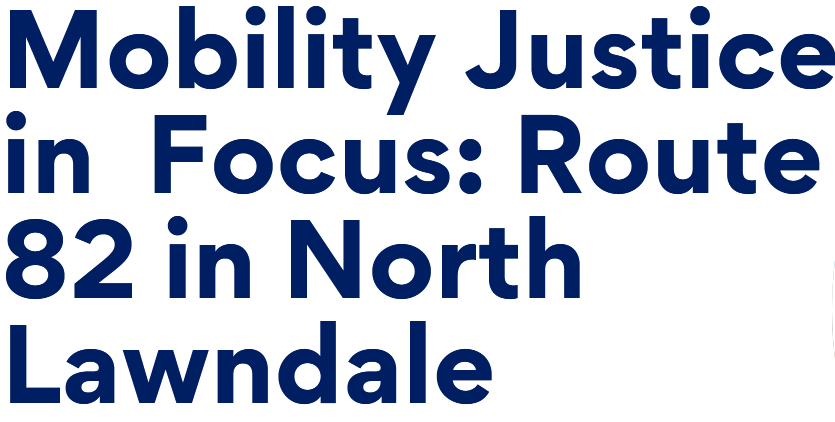- ADA: The Americans with Disabilities Act, passed in 1990, guarantees Civil Rights for individuals with disabilities including access to programs, goods, and services.
- Bus stop assets: Features added to a bus stop to make the experience of using a bus stop more pleasant or accessible to persons with disabilities.
- Contract Selling: A predatory real estate practice wherein Black homebuyers purchased homes with excessive down payments, in monthly installments at high interest rates, towards inflated purchase prices but did not gain full ownership until payment was made in-full and all conditions were met. This often resulted in eviction if buyers were late on payment or for other minor infractions. This is essentially “the illusion of a mortgage without the protections of one.” Contract selling prevented Black contract buyers from building any equity in the process, perpetuating the cycle of generational poverty.
- Curb cut: A concrete ramp graded down from the surface of a sidewalk to street level. Curb cuts make it possible for pedestrians with strollers, grocery carts, wheelchairs, and walkers to safely and easily cross the street.
- Interactive agency dashboards: Digital component of a transit agency’s website that allows private citizens to search and visualize data on ridership statistics, on-time performance, service coverage and frequency, and more.
- Environmental Justice: Also known as EJ, defined by the EPA as providing an environment where all people enjoy the same degree of protection from environmental and health hazards and equal access to the decision-making process to maintain a healthy environment in which to live, learn, and work.
- Key Route: According to CTA Service Standards and Policies: “The Key Route bus network was established to ensure that customers across the more densely populated parts of the service area with high transit usage can readily access bus routes meeting more stringent frequency standards. Routes in the Key Route network are typically spaced one mile apart, which allows for approximately a half-mile journey to reach a route in this network.”
- Particulate matter 2.5: A measure of exposure to airborne particles less than 2.5 micrometers in diameter. Particulate matter can come from natural sources (pollen, bacteria, mold) and industrial sources (exhaust, smoke, chemicals). High exposure to particulate matter is associated with adverse health effects.
- Tactile ramp: A strip added to curb cuts with raised, textured surface indicators. Tactile ramps warn pedestrians with vision impairments that they are approaching an intersection.
- Tree Canopy: Parts of the tree that provide shade to people.
- Redlining: Referring to the Home Owners Loan Corporation (HOLC) system for grading neighborhoods as “Best,” “Still Desirable,” “In Decline,” or “Hazardous.” The “Hazardous” neighborhoods, generally shown as red on maps, were often majority-Black neighborhoods or communities of immigrants. Homeowners were often denied loans and mortgages for homes in redlined areas based on HOLC grades, resulting in systemic barriers to homeownership for Black and immigrant populations.
- Urban Heat Island: The warming effect of the urban environment caused by excess asphalt, concrete, and other manmade materials.
